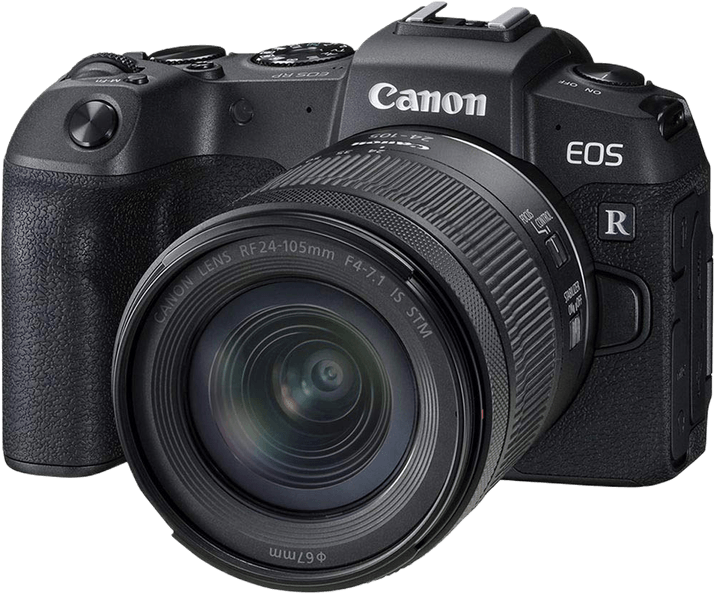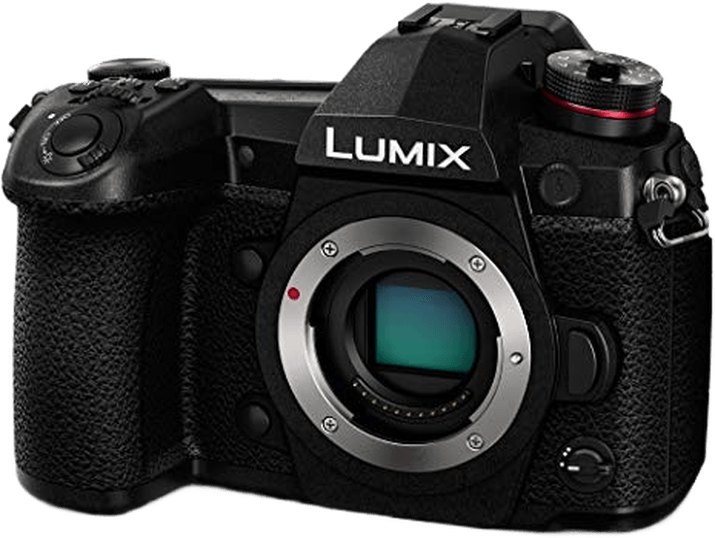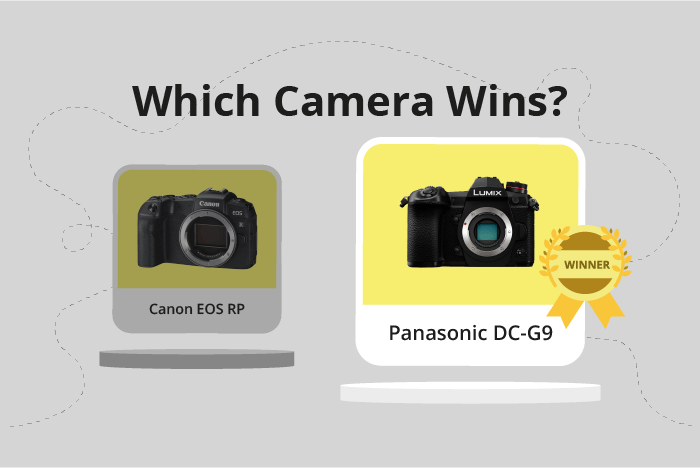Canon EOS RP vs Panasonic Lumix DC-G9 Comparison
Canon EOS RP

Panasonic Lumix DC-G9

The Panasonic Lumix DC-G9 outperforms the Canon EOS RP, scoring 70/100 compared to the Canon’s 65/100. Both cameras share similarities, being mirrorless and having comparable launch prices ($1300 for Canon and $1699 for Panasonic). However, the Panasonic G9 stands out with its slightly larger size (137 x 97 x 92mm) and heavier weight (658g), offering more functionality and features.
On the other hand, the Canon EOS RP is more compact (133 x 85 x 70mm) and lighter (440g), making it a more portable option. Despite its lower score, the Canon camera still delivers quality results and may be more suitable for casual photography.
Taking these factors into account, the Panasonic G9 is the better choice for advanced photographers seeking enhanced features, while the Canon EOS RP is ideal for those prioritizing portability and ease of use.
Canon EOS RP vs Panasonic Lumix DC-G9 Overview and Optics
The Canon EOS RP wins in the optics comparison with a score of 67/100, while the Panasonic Lumix DC-G9 scores 65/100. Both cameras share common specifications, including a CMOS sensor, fast shooting speed, and similar processors. However, there are significant differences that set them apart.
The Canon EOS RP has a higher megapixel count at 26, compared to the Panasonic Lumix DC-G9’s 20 megapixels. This difference allows the Canon EOS RP to capture more detail in images. Additionally, the EOS RP’s full-frame sensor size and higher DXOMARK score of 85 contribute to better image quality and low-light performance. The Canon RF lens mount offers compatibility with Canon’s new line of RF lenses designed for mirrorless cameras.
On the other hand, the Panasonic Lumix DC-G9 has a faster shooting speed of 20 frames per second, making it more suitable for capturing fast-moving subjects. Its Micro Four Thirds sensor and lens mount provide a wider range of lens options from various manufacturers. The G9 also has built-in image stabilization, which can help reduce camera shake and blur in photos.
While the Canon EOS RP offers superior image quality due to its higher megapixel count, full-frame sensor, and better DXOMARK score, the Panasonic Lumix DC-G9 excels in shooting speed and lens options. The G9’s image stabilization feature is also an advantage over the EOS RP. However, the Canon EOS RP still takes the lead in optics performance with its higher overall score.
Canon EOS RP vs Panasonic Lumix DC-G9 Video Performance
The Panasonic Lumix DC-G9 outperforms the Canon EOS RP in video capabilities with a higher score of 83/100 compared to the Canon’s 70/100. Both cameras share common specifications, such as a maximum video resolution of 4K and dimensions of 3840 x 2160. Additionally, both cameras include built-in time-lapse functionality.
The Lumix DC-G9 excels due to its higher maximum video frame rate of 60fps, which doubles the EOS RP’s 25fps. This significant difference allows the Lumix DC-G9 to capture smoother, more detailed video, particularly in fast-moving or action-packed scenes. The increased frame rate results in a better overall video performance, contributing to the higher score of the Lumix DC-G9.
While the Canon EOS RP falls behind in frame rate, it still provides quality video performance with its 4K resolution and time-lapse functionality. It is a suitable choice for users who prioritize other camera features over video capabilities or do not require the higher frame rate offered by the Lumix DC-G9.
When comparing the video performance of these two cameras, the Panasonic Lumix DC-G9 is the clear winner due to its superior frame rate. However, the Canon EOS RP remains a viable option for users with different priorities or preferences. Ultimately, the choice between these cameras should be based on individual needs and requirements, keeping in mind the notable difference in video frame rate.
Canon EOS RP vs Panasonic Lumix DC-G9 Features and Benefits
The Panasonic Lumix DC-G9 outperforms the Canon EOS RP in features, scoring 83/100 compared to the Canon’s 70/100. Both cameras share several specifications, including a 3-inch screen size, 1040000-dot screen resolution, touchscreen functionality, flip screen, and the absence of GPS. Additionally, both cameras support WIFI and Bluetooth connectivity.
The Lumix DC-G9 excels in its feature offerings. Its superior score reflects a more comprehensive set of features that cater to a broader range of photography enthusiasts. The higher score indicates that the Lumix DC-G9 is better equipped to meet the diverse needs of photographers, providing more functionality and versatility. This is an essential consideration for users seeking a camera that can adapt to various photography situations and preferences.
The Canon EOS RP, while scoring lower, still has its advantages. For photographers who prioritize simplicity and ease of use, the EOS RP may be a more suitable choice. Its lower score suggests that it offers fewer features, making it potentially less daunting for beginners or casual users. The EOS RP can still deliver quality results without overwhelming users with an extensive list of features.
Ultimately, the Lumix DC-G9 stands out as a more feature-rich camera, making it a better choice for photographers seeking versatility and advanced functionality. On the other hand, the Canon EOS RP offers a more straightforward experience and may be better suited for those who prefer a simpler, less feature-heavy camera.
Canon EOS RP vs Panasonic Lumix DC-G9 Storage and Battery
The Panasonic Lumix DC-G9 outperforms the Canon EOS RP in storage and battery, scoring 71/100 compared to the Canon’s 29/100. Both cameras accept SD, SDHC, and SDXC memory cards, and are UHS-II compatible. Additionally, both offer USB charging capabilities.
The Lumix DC-G9 excels with its dual memory card slots, offering more storage capacity and flexibility. It also provides a longer battery life of 400 shots, compared to the EOS RP’s 250 shots, using the DMW-BTC13 battery type. This advantage allows users to shoot for extended periods without needing to change batteries or memory cards.
The Canon EOS RP, however, only has one memory card slot and a shorter battery life, using the LP-E17 battery type. These limitations may require users to carry additional memory cards and batteries during extended shooting sessions.
Ultimately, the Panasonic Lumix DC-G9 is the superior choice for storage and battery capabilities, offering greater flexibility and endurance to photographers.
Canon EOS RP vs Panasonic Lumix DC-G9 – Our Verdict
Are you still undecided about which camera is right for you? Have a look at these popular comparisons that feature the Canon EOS RP or the Panasonic Lumix DC-G9:

